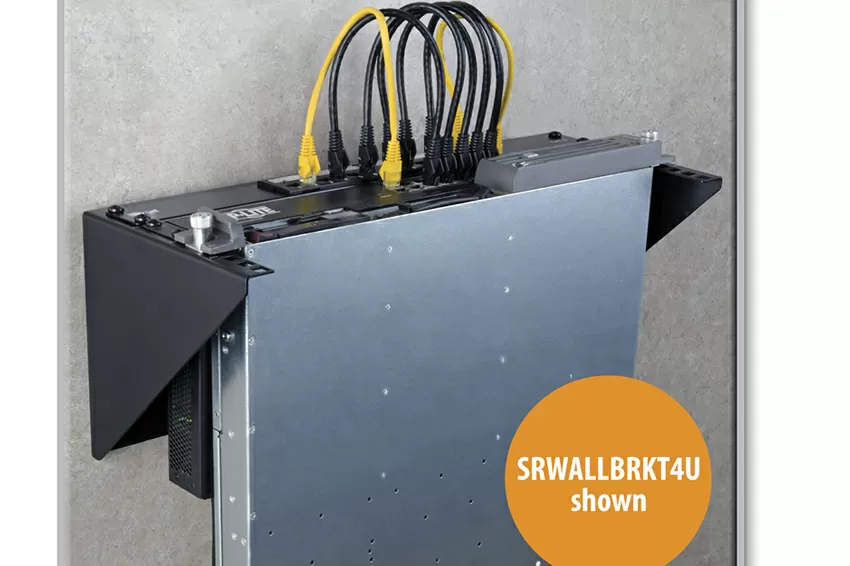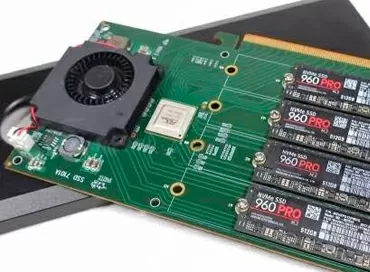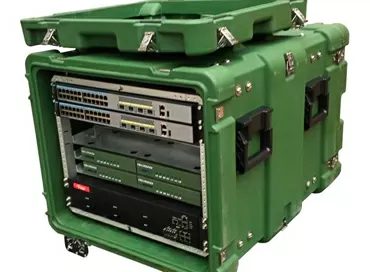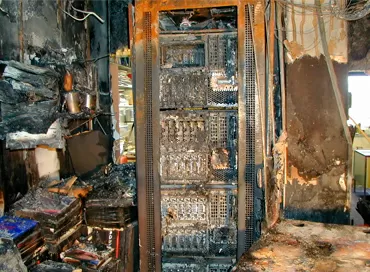Article about vertical wall-mounting of servers
I often came up with the idea: why not place servers vertically, because if you do not have a special server rack, but have a 1U-4U machine, and even a full length of 655 mm, then this bandura will take up the entire room, the entire table or rack. No, I'm not saying that server cabinets are outdated and I'm not promoting the idea of another revolution in the data center. I'm talking about home laboratories, small test rooms, or maintenance - free locations where 1-2-3 pieces of equipment are located, and every square centimeter is worth its weight in gold. It may be your storage room or garage.

I came across the vertical mounting brackets on the wall quite by accident, and you know how it happens: with a cry of “where were you before, scoundrels”, I rushed to study the question, and I hope my research will be useful to you.
What equipment are we talking about?
First of all, about network switches and servers of small depth (30-45 cm). These are light devices that live next to each other, and due to the low power, do not require any special cooling: there is no cold corridor, let alone water supply. Of course, we can think of immersion heat removal systems, huge baths filled with a special liquid, in which servers are placed, but now we are not talking about them.
Since by and large, no one limits you, you can install small storage and uninterruptible power supplies on the wall: the metal will withstand.
Type of vertical rackmounts?
I came across three types of solutions:
- ordinary corners, sometimes not even fastened together,
- frames that are more complex but open metal trusses
- closed cabinets with cable channels hatches and fans
That is, there are more types of mounting than in traditional server cabinets, where there are no simple corners.
Advanced models of server racks have patch panels placed in the usual orientation: facing the user, and you can also place PDU blocks in the same way, saving depth.
Wall mount format
Typically, wall mounts have a depth of up to 4U (we don’t say “height”, because in this case, the server rack grows out of the wall towards you). Perhaps this restriction is due to the thickness of the metal that is experiencing high bending loads, but apparently large formats are simply not in demand: when there is a lot of" iron", a cabinet is already allocated for it.
What are the advantages of vertical wall mounting?
I think this question is unnecessary: just look at how enthusiasts are getting rid of by hanging full-fledged 1U servers with 2 processors and 4-8 disks on the wall. The thickening in this case is even less than that of the crate under the plasterboard covering when finishing.
Simply put, you do not waste space at all by placing the server on the wall, and so that it does not cloud your view with its shabby case, you can paste an application with Aliexpress on it.
What are the disadvantages of vertical mounting?
Basic - one: all rackmount equipment in the world is designed for horizontal installation in a rack, not for hanging on the wall like a portrait. Already when placing two pieces of equipment, you will face the difficulty of servicing the one that is closer to the wall. Whether it’s a server or a switch, you’ll have to pull it up, or remove all the other devices that are closer to you.
Agree - it’s one thing to pull on a heavy UPS on sliding rails, and quite another-to lift 25 Kg of live weight up, holding on the sides and moving your hands.
The second point is the direction of ventilation, because the server placed vertically on the wall will swallow cold air from above and throw out hot air from below, which in turn will rise and go to the second circle. For devices with side-mounted fans, this is not relevant, but it is only switches and various network gateways. Well, linear-interactive UPS that do not need cooling in normal operation.
Well, the third drawback is the openness of the design to your eyes. In the simplest version, you have all the cables running from the outside, and given that all switches have ports in the front and almost all servers in the back, you are provided with noodles from the wires.
What is the price of the question?
Given that the main consumers of such mounts are enthusiasts who either bought a used server or “brought” it from work, the prices are more than affordable: from $ 50 plus delivery. Serious telecommunications cabinets designed for organizations cost more than $ 300.
What are the prospects?
In a 3U rack, you can place a 32-56 port switch, an 8-core server with 8 SSDS in RAID 5, and a 750 VA UPS that will power all of this. You will have a powerful virtualization node that consumes about 110-150 watts from an outlet, has a high-performance disk system and network interfaces at 20-40 Gbit / s. That is, we are talking about very powerful hardware.
Modern processors are less likely to require the presence of the South bridge on the Board, and therefore are increasingly installed in the mini ITX format boards. The motherboards we reviewed based on the 8-core Intel Xeon D and AMD EPYC 3000 are an excellent example of the saying “small and small”: the speed in this format is enough for any tasks today, and if something happens, you can install Xeon W. For IoT and peripheral computing, this format is an opening, because on objects, the server can simply stand under the table on the principle of “where you put it, I work there”.
Where to buy?
It is easier to buy vertical racks at Amazon, or at stores of american manufacturers BlackHawk Labs or New Tech Industries. If you know where to buy vertical server racks in the CIS, write in the comments.
Michael Degtjarev (aka LIKE OFF)
19/02.2020













